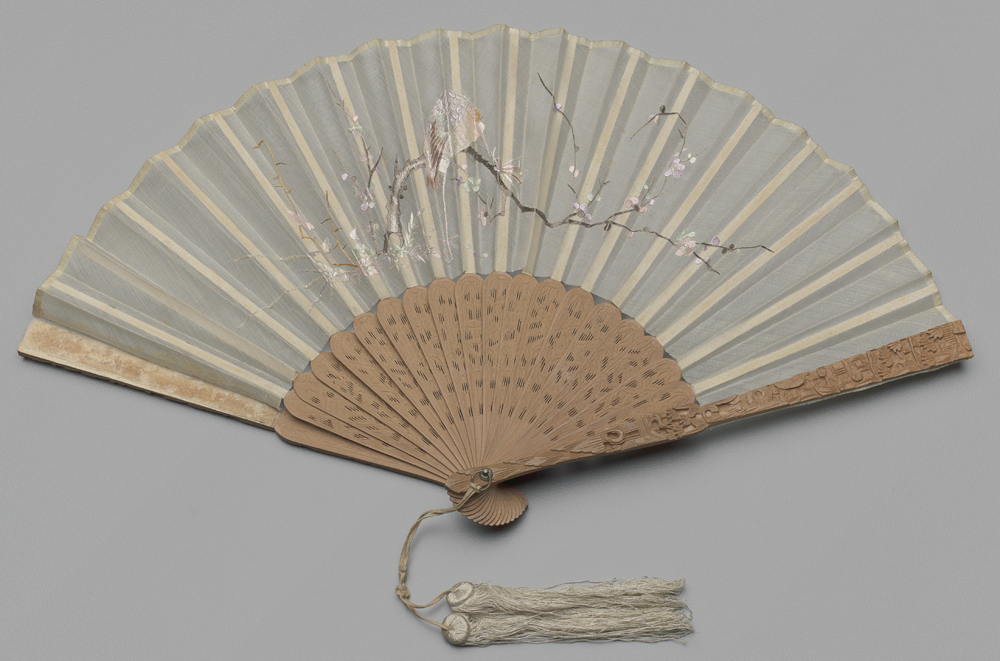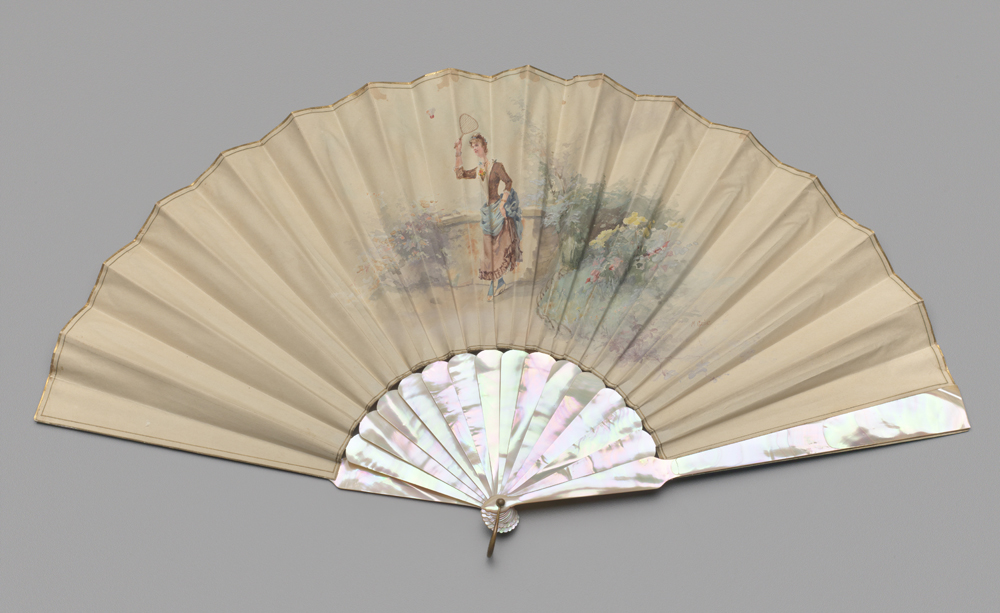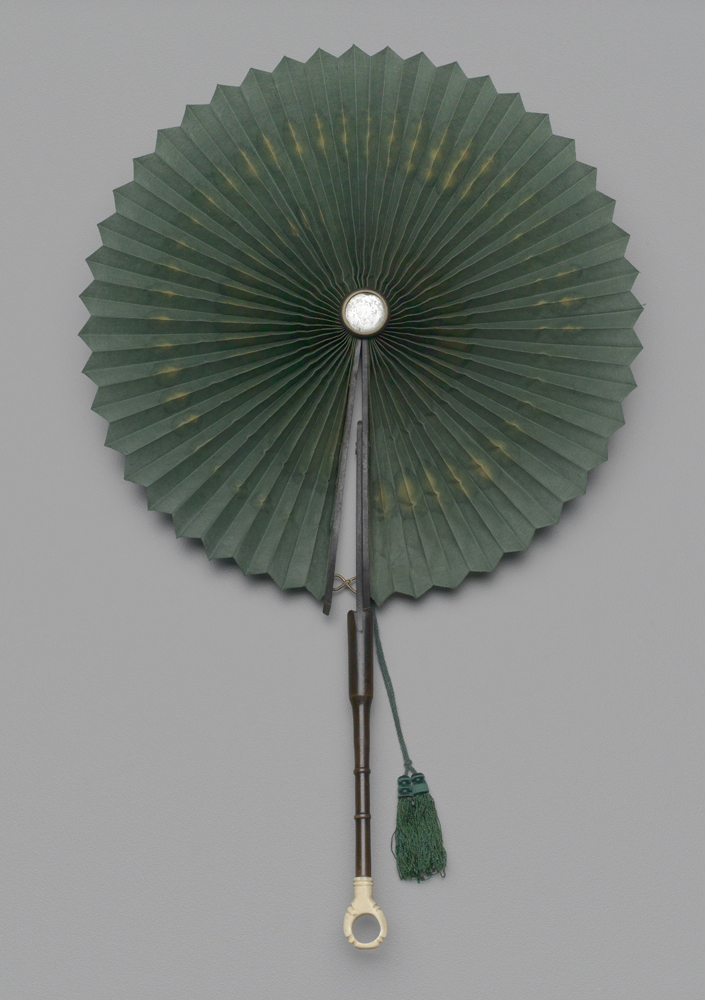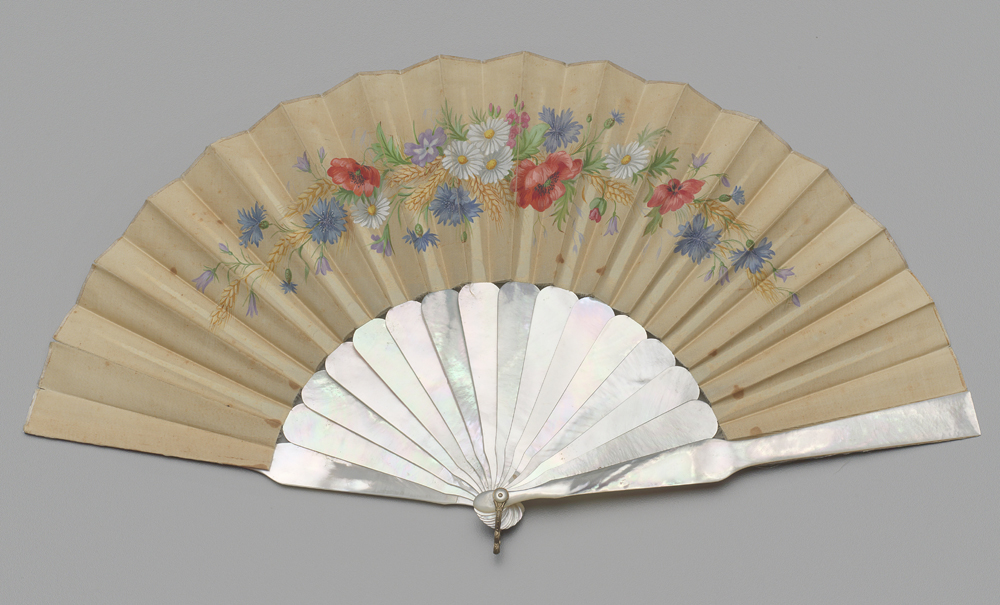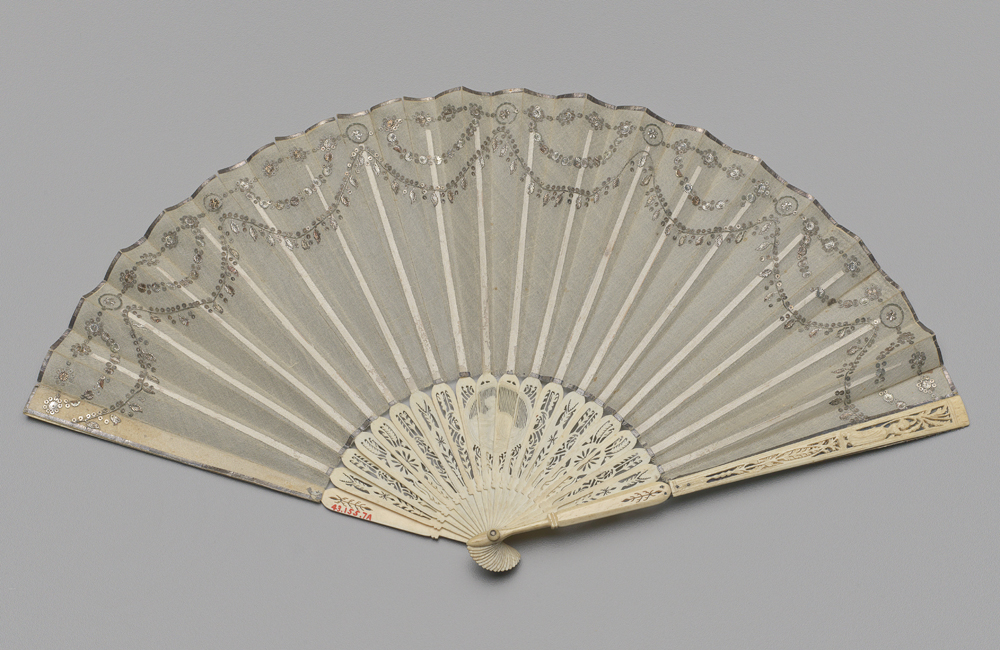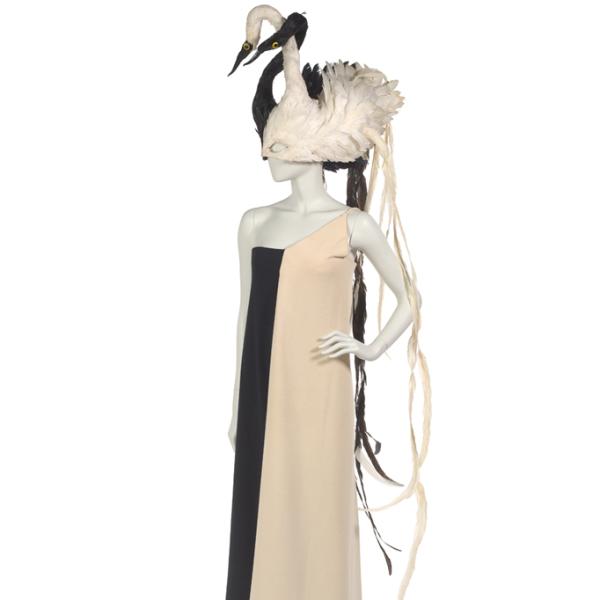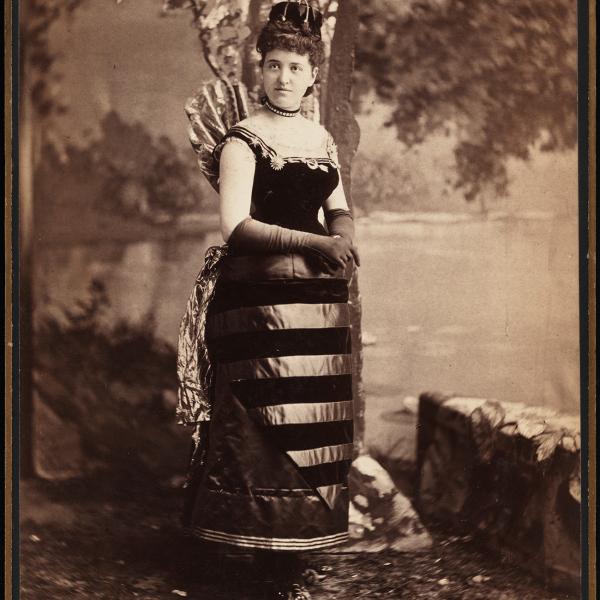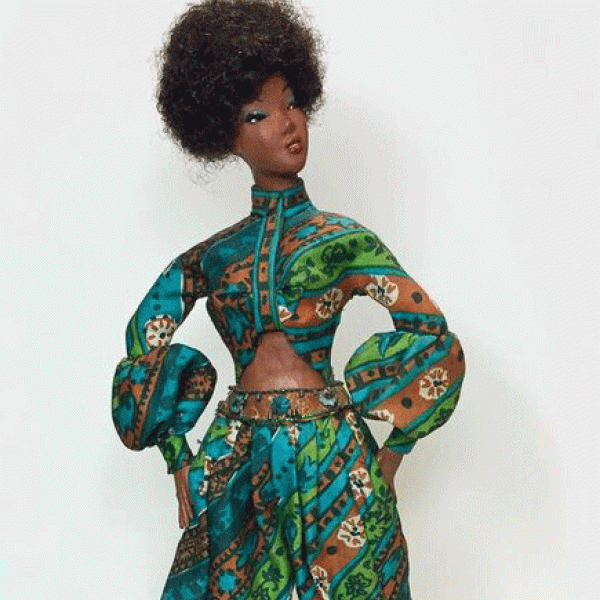Fantastic Fans
Monday, January 1, 2018 by
In 2015, the Museum of the City of New York digitized and catalogued almost 300 hand fans—nearly fifty percent of our collection—thanks to a grant from the Fan Association of North America (FANA). This past summer, FANA provided the Museum with another generous award, which allowed us to digitize and make publicly available an additional 116 fans. All of the fans highlighted in this post were digitized during this most recent drive and are presented here for the first time.
The Museum’s fan collection is exceptional not only for its aesthetic quality, but also for the rich historical information attached to most examples. For instance, the Museum preserves a group of delicately pierced and carved “Canton ivory” fans—produced in quantity for export in the late 18th century—connected to the family of Herman Melville (1819-1891), author of Moby Dick. One bearing the initials ML (detail above, 75.134.8A-C) is said to have belonged to his grandmother, Maria Lansing—a descendent of one of the original Dutch families to settle in Manhattan in the 17th century. Two others (75.134.7 and 75.134.9) belonged to either Elizabeth Shaw (1822-1906), Melville’s wife, or his mother, Marie Gansevoort Melville (1791-1872). More recent pieces include a small fan of clipped teal ostrich feathers carried by a Junior Leaguer at the organization’s annual Winter Ball (2001.56.1), and a paper fan commemorating the rededication of the gravesite of Townsend Harris, president of the NYC Board of Education and the first Japanese American Consul General in Japan, in Greenwood Cemetery on July 24, 1986 (97.102.289AB).
Below are five beautiful fans from the group digitized over the summer, each with its own fascinating story.
This exotic imported fan, accompanied by its original lacquered wood box, has an extraordinary history of continued use by two generations of New Yorkers. It was first carried by the donor's grandmother, Julia Wood Miller, at her marriage in Tokyo to Francis Brinley Hebard Paine (1869-1917) on May 2, 1900. Francis was an electrical engineer who worked for Westinghouse Electric and Manufacturing Co., and lived for approximately two years in Asia. It was subsequently used by their daughter (the donor's mother) Margaret Whiting Miller Paine (1901-1964) at her wedding to Melvin Abbott Conant on June 8, 1920, at the St. Thomas Church in NYC.
Signed by celebrated fan artist Eugene Grivaz (1852-1915), who studied at the Ecole des Beaux-Arts in Paris and also worked in New York City, this large and impressive fan features an image of a woman playing badminton in a garden landscape—a rare depiction of female outdoor sport. Dating to about 1885, it was given with a box—possibly original—marked “Tiffany & Co. / Union Square,” the address of the famed luxury goods emporium from 1870 to 1906.
This rare so-called “parasol” or cockade fan has a circular deep green glazed cotton leaf, which can pivot on the faux-bamboo carved wood handle to shade one from the sun, or be held in place with a gilt metal bracket to fan oneself. A circular mirror on one side would have allowed the user to inspect their appearance.
The hand-painted flowers on the cream silk leaf of this mother-of-pearl fan—white daisies, red poppies, blue cornflowers, purple bell flowers, and wheat—are traditionally emblematic of summer, particularly in France where the colors of the flowers mirror those of the “tricolor” state flag. They also echo the embroidered blossoms on the Museum’s celebrated evening gown worn by Mrs. Harrison Williams, designed by Coco Chanel for her Summer 1939 haute couture collection, the last before World War II. An associated (possibly original) lidded box bears the printed label for the Parisian fanmaker Bernay, successor to the Maison Signon, located at 23, Rue de la Paix, one of the most elite shopping centers in mid-19th-century Paris. The fan probably belonged to the donor's grandmother, Mrs. Samuel Tilton (née Helen Reed) or her mother, Mrs. Gustave Schirmer (née Grace May Tilton, 1856-1943).
Dating to the years around 1900, this exceptional fan has a black silk net leaf with a delicate appliqué of lace forming large arrowhead or goosefoot leaves, a favorite “Art Nouveau” motif. Round and lozenge-shaped paillettes mimic sparkly dew, while inlaid steel roundels in the sticks add additional shimmer.
At the top edge, the fan leaf has been cut to shape to follow the sinuous edges of the foliage, mirrored by the serpentine celluloid guards. It was made by Duvelleroy, the most celebrated French fanmaker of the 19th and early 20th centuries, and survives with its original hinge-lidded box covered with embossed gilded Japanese paper.
This late 18th-century fan with a silver spangled silk leaf and carved ivory monture belonged to Mrs. Thomas C. Pearsall (née Frances Buchanan, d. 1863), the daughter of one of the most prominent merchants of colonial New York. Operating first with his brother Walter, royalist Thomas Buchanan (d. 1815) owned a flourishing import business at 44 Wall Street from 1792 to 1809, when his son joined him and the firm became known as Thomas Buchanan & Son. Their next door neighbors (at 43 Wall St.) were the Pearsalls, who were from a long line of English New Yorkers stretching back to the mid-17th century. Thomas Cornell Pearsall married the sixteen-year-old Frances Buchanan in 1799. The fan may have been a gift from her husband or her father. It is accompanied by a papier maché box covered with printed paper with a label for the London fanmaker Clarke at 45, Ludgate Hill. Although Clarke is only known to have made painted fans, it is possible that the fan was consigned to him for a repair, as one is still visible where the main guard meets the stick.

